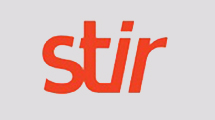
by davidlecours | Jun 15, 2017 | Branding, Progressive Marketers
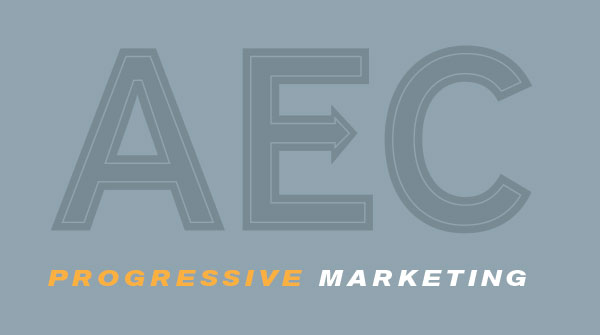
In terms of memorability and messaging, most A/E/C firms have terrible brand names. Firms named after founders can be problematic if difficult to say or spell, and challenging for ownership transition. Acronyms are even worse. Lost in alphabet soup, they are neither memorable or distinctive.
I chose to interview Leslie Young, Assoc. AIA, LEED AP, CDP because her firm recently renamed using a metaphorical name, STIR Architecture. Having a great brand name is an indicator of progressive marketing.
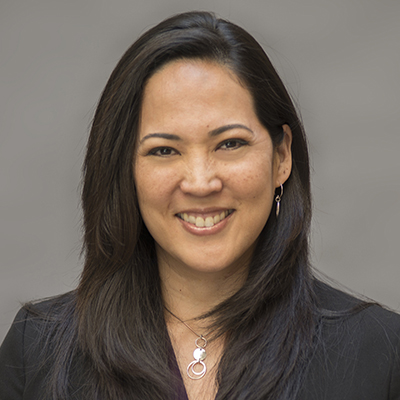
Tell me about your role at STIR
I am Associate Partner and Director of Strategic Development leading Marketing and Business Development. Known for both large-scale, complex mixed-use projects in the United States, Europe and Asia, as well as a boutique portfolio of adaptive reuse, institutional and transit work, STIR has offices in Los Angeles, Amsterdam, and Manila. I am one of two Associate Partners and 3 Partners who were ultimately the decision makers for the renaming of our firm.
Your firm has changed names a couple of times in its history. Why?
The firm was founded in 1984 by Ronald Altoon and James (Jim) Porter, so we started out as Altoon & Porter Architects. In 2012 when Jim left the firm, we updated our name to Altoon Partners. When Ronald left the firm in 2015, we saw an opportunity to rename the firm as something not directly tied to partner names. In 2016, we reintroduced ourselves as STIR Architecture.
Metaphorical naming typically isn’t done by AEC firms. Did you consider using partner names or adopting an acronym?
Since the firm’s founding, the intent was always to create a legacy firm with a formal ownership transition plan. The remaining partners have been at the firm for 30 years, on average. There was a little bit of “I’ve earned the right to have my name on the door” thinking, so we did initially consider the typical acronym of using the first letter of each partner’s name. But we discovered fairly quickly that DSA, ASD, DAS, ADS, SDA was not going to work for us. But mostly, we didn’t want to go through the naming process again if one of the partners leaves. We thought it was an opportunity to come up with a fresh name that better describes who we are.
Any other considerations for the new name?
Many of our newer staff had never worked with our founders, Altoon or Porter. While our values and practice hasn’t changed dramatically, we wanted to evolve the firm with a new name that everyone could embrace as their own.
Did you work with an outside consultant for the naming process? Why?
For about five seconds, we thought we could do it ourselves. But we quickly realized we needed an expert and a referee. We also had a strict deadline ““ attendance at our largest annual domestic tradeshow. We hired WOW Branding to keep us on schedule. Also, working in foreign markets, we needed their help with a name that translated well into other languages.
What Was the Naming Process?
We had conference calls with our consultant and the five decision makers. Some lasted as long as six hours. We reviewed our Mission, Core Values, and prioritized goals of the firm. The strategy has to come first. Next, our consultant presented a long list of about 50 names, which we edited down to 8-10, then ultimately 5. From these 5 finalists, they did availability research and some basic design treatment. We had two real favorites, one of which we ultimately decided could cause us intellectual property problems. Ultimately, we decided on STIR Architecture, which we are very excited about.

Why STIR? What Does it Mean?
We love that stir is a verb, as in “stirring things up.” We like to tackle new design challenges. Our work also “stirs” the emotions of users of our buildings. STIR refers to how we practice””complex projects with many stakeholders and multiple team members. The energy of our new name appeals to us, our staff and our clients. It is forward-focused. It reflects who we are, what we do and what people expect of us. Our name is our promise.
How Did You Communicate This New Name to the World?
We distributed press releases stating that as of April 11, 2016, our new name is STIR Architecture. These included sharing our strategy of developing the name and what the name means to us. We followed up with a direct mail promotional piece (see below) to 600 people on our mailing list. Since we didn’t have physical addresses for everyone, we supplemented the direct mailer with a 2500 person email announcement. We chose not to reference our previous name in a tagline or as a transitional device. We went all-in with STIR. We still own all our previous URLs, so if a user inputs an old website address, it will automatically redirect the user to our new site at stirarchitecture.com. We continue at every opportunity to reconfirm our brand through direct mail, social media, press releases, advertisements, etc. Consistent reinforcement of our brand at every turn has been a priority.
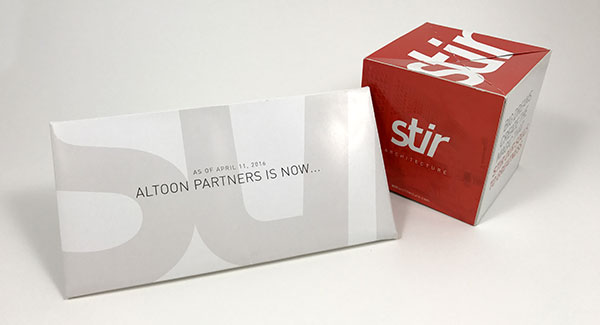
What Advice Would You Give To Other Firms That Are Considering a Name Change?
Give yourself time. On one hand, it was good that we had a strict deadline to get the name done by, but it caused a lot of stress. Keep in mind that getting the name done is really just the beginning. Then you have to develop a new logo, visual branding tools, marketing collateral, and website. Also, having a formal program in place to keep reinforcing the brand moving forward is key.
In general, I recommend other firms dream big, be bold. As long as you are consistent in continuing what has been successful for the firm in the past, clients will continue to follow you.
Conclusion
In start-up mode, most firms, unfortunately, put little thought into the firm name. The sole focus is bringing in any project that pays the bills. Moving out of childhood and into adolescence, firms should start to think and act for themselves, developing a distinct point-of-view. If not done previously, this is the time to develop a distinct brand name that reflects where the firm is headed, not where you’ve been. Renaming isn’t easy””few things of value in life are easy. As Leslie and STIR Architecture have shown, with the right approach, a small focused team of decision makers, and an expert guide, success is attainable. Past clients will continue to work with you and future clients will gain a favorable first impression.
SaveSaveSaveSave
SaveSave
SaveSave
SaveSave
SaveSave
SaveSave
SaveSave
SaveSave
SaveSave
SaveSave

by davidlecours | Apr 26, 2017 | Experience Marketing, Progressive Marketers

This post is the first in a series highlighting progressive marketing from A/E/C firms and leaders. How do I define progressive? Firms that are marketing proactively, not simply reacting to RFPs. It’s leaders developing, sharing, and archiving their knowledge as experts. Progressive firms believe that relationships can, and do, begin online, so they are fluent in digital marketing. Progressive firms embrace human-centered marketing with emotional intelligence, and the vulnerability of creative risk-taking.
I chose to interview Nicole La, Experience Director at TEECOM, because of their progressive marketing to clients and talent through experience design.
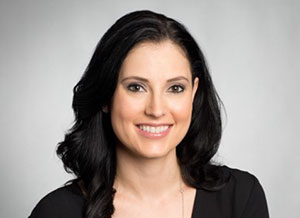
Tell me about your firm.
TEECOM provides “the tech in architecture.™” We provide integrated telecom, audiovisual, acoustics, security, network and wireless technology design for clients including building owners, tenants, architects, engineers, and contractors. We work in many sectors with a common theme of improving the experience of people using our clients’ buildings. Of course we want our clients to be happy, but really we are advocates for the people that live, work, learn, heal, and perform in the buildings that our clients design and build. We are 90 people, with offices in Oakland, Dallas, Portland, and Brighton, United Kingdom.
Tell me about your title, Experience Director.
I set strategy for our firm’s hiring, marketing, and internal continuing education efforts. I focus on the employee and client experience enabling TEECOM to continue to evolve toward true innovation.
So, not just marketing to win new clients, but also marketing to win and retain talent?
Yes, it’s crazy how most firms leave recruiting and retention to only Human Resources when the Marketing department typically knows the brand best, and how to persuasively tell the firm’s story.
How did your role evolve?
A year ago, our CEO asked me to take over talent recruiting. At first I was resistant because it was unfamiliar territory. But the more I thought about it, recruiting is simply marketing for people. I didn’t want to give up marketing to clients, so our CEO and I brainstormed about how we could make it work. Part of our solution was to hire a Marketing Manager for proposals to free me up to embrace my new responsibilities.
How did your firm begin with experience design?
Leaders in the firm read The Experience Economy by Pine and Gilmore, and it changed the culture of our firm. The book promotes a new way of thinking about connecting with clients and talent (employees) to win their loyalty. Simply selling services is no longer enough. Leading firms stage experiences that enhance the value of their services.
How did TEECOM start implementing experience design?
Good question, because in our first year, before we rolled this out to the client experience, we focused on the employee experience. We did an experience mapping exercise starting with job candidates learning about TEECOM, to the interview experience, through the hiring process. New hires receive a playful “Welcome to TEECOM” handbook that is customized for that person. It is not a full-on employee handbook, but rather a customized welcome to the team, complete with maps, Yelp reviews of local services, and all-important local restaurant reviews.
What are some things you are doing to enhance the employee experience?
New employees are greeted at their desks by a gift of branded materials that they have personally chosen through our online store. We recognize employee accomplishments such as obtaining certifications or anniversaries on our general Slack channel and in our monthly all-hands meetings. We post employee kudos on digital signage throughout the office. Each employee receives a FitBit and we host wellness programs for the mind and body, branded as TEECOMfit. All employees have a mentor with whom they meet regularly to set specific career goals and, if they want, personal goals. We are currently launching TEECOMuniversity, an internal continuing education program open to all employees, which gives a formal structure to our ongoing knowledge shares.
As a technology company, how do you use technology to measure internal experience?
We don’t use email for internal company communication. Instead, we use Slack, a cloud-based team collaboration tool. Within Slack, employees receive a weekly pulse survey via Officevibe with five simple questions about how things are going at work. Feedback is delivered anonymously to management in an engagement report with suggestions for improvement. We also use a platform called Small Improvements to conduct quarterly 360 Reviews for continual feedback and improvement.
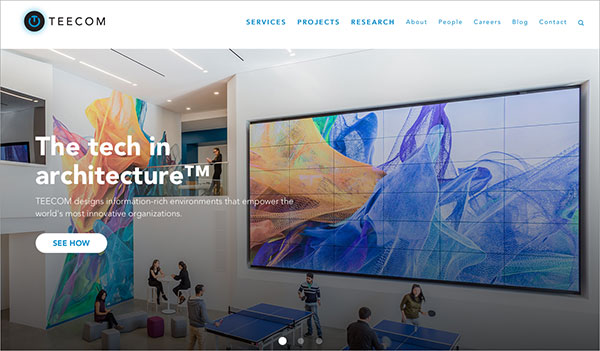 photo in website: ©Emily Hagopian
photo in website: ©Emily Hagopian
What about marketing for the client experience?
We had already been helping our clients to map the experience of their building users, so it made sense that we would map the experience of our own clients from beginning to end. We developed a set of guidelines for the business development and proposal experience outlining everything we need to do to win great clients. We elevate ourselves as pursuit team members by responding quickly and providing materials that go above and beyond the basic request. We help clients along their decision-making process by creating articles and videos to educate and inform them about how technology’s evolution will impact their projects. Our guidelines for project management describe behaviors shaped by our firm values: demonstrating that we care, maintaining trust, and finding ways to add value. We typically measure the client experience through direct feedback at dinners and events with clients.
Conclusion
Nicole and TEECOM are a great reminder that A/E/C firms aren’t simply selling services, we are selling a complete experience. The sum of these experiences equal our reputation, aka brand. This reminds me of the famous Maya Angelou quote, “People will forget what you said, people will forget what you did, but people will never forget how you made them feel.” Make people feel great throughout the journey of your firm, and you’ll develop fierce loyalty.
As TEECOM’s website declares, “our clients demand innovation.” It’s great to see the firm practicing what they preach by embodying innovation in their marketing approach. If your firm is ripe for this approach, start small with a single client or employee experience that you can master. Then, build on that momentum for a more comprehensive approach that will hopefully become integrated into your culture. To learn more, below are some resources.
Resources Mentioned
The Experience Economy book
Adaptive Path (consulting firm that helped TEECOM with experience mapping)
Slack cloud-based team collaboration tool
Officevibe for pulse surveys
Small Improvements for 360 reviews
TEECOM






 photo in website: ©Emily Hagopian
photo in website: ©Emily Hagopian